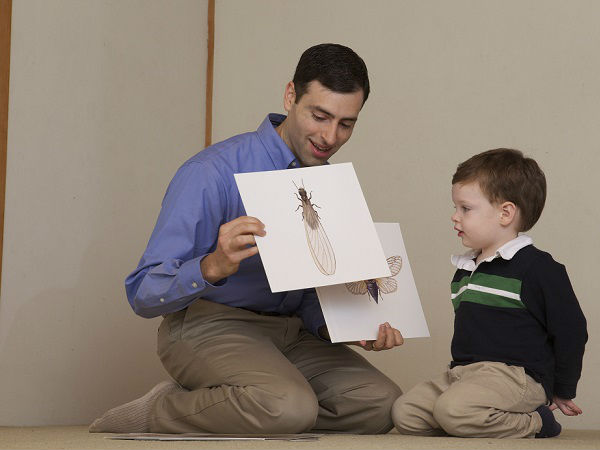Teaching sign language to babies has grown in popularity in recent years. Not only does it help parents to understand their child's needs even when the baby does not know how to speak to express their wishes, this method also helps children develop their brain, language and motor skills.
content
7 benefits "miraculous" sign language brings to your baby
Teaching children sign language, what should you pay attention to?
Children can start learning and using sign languages from about 6-7 months old. At this stage of development, in addition to realizing the power of crying, infants are very receptive to other ways of communicating to express needs as well as attract adult attention. However, you can only help your child become more proficient at communicating with others by practicing sign language early.
Of course, the child must possess fine motor skills, know how to control and control her beautiful little hands skillfully. In fact, some babies handle and hand signals quite mature at 7 months of age, others have to wait at least a few months after that.

Teaching babies
7 benefits "miraculous" sign language brings to your baby
- Increase communication ability: Children will understand stories better when they learn to share. Being communicated and understood as two of the many factors that help children become more confident and happier when interacting with others.
- Limiting anger: angry gratitude often comes from a child not being properly met with needs. Try asking how to understand if I just cry if I want to? Now, if there is another easier to understand way to express, of course, both the mother and the child will be more happy and less angry.
- Language development: When teaching children to sign together, to clearly state the meaning of signs, make sure they learn more ways to talk and pronounce. Thanks to that, the baby's vocabulary is also expanded and developed much more.
- Increase IQ: Some studies show that children who learn sign language early are able to read and spell and have higher IQ than other children.
- Bonding with love: Teaching sign language is also a method to connect the feelings of parents and children.
- Motivation promotion: To understand sign language, children must focus on observing to make similar signs, so that movement, especially fine motor, is promoted better.
- Happy time: As long as don't put too much pressure on, everyday teaching and learning sign language is as simple as playing games.
Teaching children sign language, what should you pay attention to?
Before teaching your child to sign language, you need to determine if your baby is ready. If the child shows interest and attention every time they hear their parents talk, curiously explore the world around them, imitate the movements of adults, the ability of their hands to be agile, they can learn with their mothers. simple ways of sign language. Start from easy to difficult, be patient with your child!

Mother should start with the simplest, most common symbols
1 / Starting early
You can start using sign language when you discover your baby's interest in communication, as late as 8-9 months of age. Signing language communication will not harm your child's future communication habits. Most babies will respond within a time, usually between 10-14 months of age.
2 / Natural sign
Instead of being overly serious, you should help your child develop sign language naturally and effectively. Any simple gesture that matches a word or sentence can be effective, such as waving an arm to describe "bird" or scratching under arm to describe "monkey". Some other suggestions: Putting your hands together and tilting your head means "going to sleep", rubbing your stomach when "hungry", rolling your hand up to your mouth means "drinking", your finger touching your nose means "smelling" .
3 / Basic needs
The most important signs your baby needs to develop and learn should be the daily needs he needs to express like hunger, thirst and fatigue.

Effective newborn care with a schedule To reduce unnecessary fatigue while taking care of newborn babies, and at the same time to create momentum for your baby to grow rapidly, you should pay attention to building a routine. baby's
4 / Signals are consistent
By seeing the same symbols from day to day, your baby will quickly understand and imitate them. To make sure your baby learns both sign language and spoken language, parents should use both at the same time when talking with their child.
5 / Family unanimously
Your baby will find it interesting when many people communicate with them using sign language. From grandparents to babysitters, anyone who spends a lot of time with the baby should at least understand the baby's most important signs.
6 / Let me be creative
Many babies invent their own signs. If this is the case for your child, be flexible in using his sign instead of the instruction manual.
7 / Say no to pressure
Signaling, like all forms of communication, should be developed spontaneously and in accordance with your baby's developmental pace. Children will learn most effectively through experience, not through cumbersome instructions. If the child feels discouraged, seems uncooperative, parents should not force the baby. Only when having fun can learn quickly and efficiently!

Create a habit of "Eat - Play - Sleep" for babies The EASY model (Eat - Play - Sleep - Mother Time) is introduced by Tracy Hogg in the famous newborn care handbook - The Baby Whisperer will bring to an extremely effective method to help mothers set a regular schedule of activities for babies















